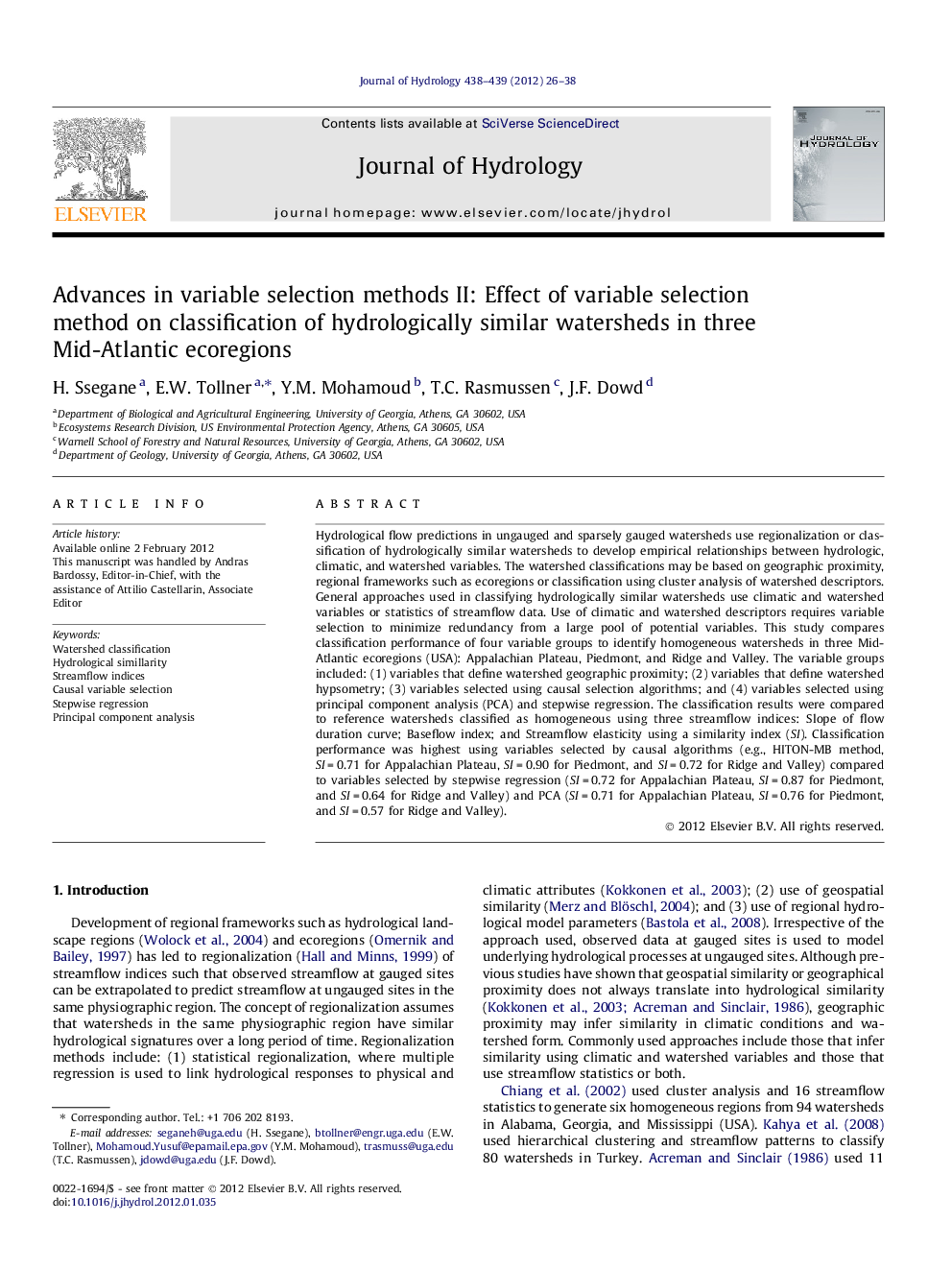| کد مقاله | کد نشریه | سال انتشار | مقاله انگلیسی | نسخه تمام متن |
|---|---|---|---|---|
| 6414017 | 1629992 | 2012 | 13 صفحه PDF | دانلود رایگان |

Hydrological flow predictions in ungauged and sparsely gauged watersheds use regionalization or classification of hydrologically similar watersheds to develop empirical relationships between hydrologic, climatic, and watershed variables. The watershed classifications may be based on geographic proximity, regional frameworks such as ecoregions or classification using cluster analysis of watershed descriptors. General approaches used in classifying hydrologically similar watersheds use climatic and watershed variables or statistics of streamflow data. Use of climatic and watershed descriptors requires variable selection to minimize redundancy from a large pool of potential variables. This study compares classification performance of four variable groups to identify homogeneous watersheds in three Mid-Atlantic ecoregions (USA): Appalachian Plateau, Piedmont, and Ridge and Valley. The variable groups included: (1) variables that define watershed geographic proximity; (2) variables that define watershed hypsometry; (3) variables selected using causal selection algorithms; and (4) variables selected using principal component analysis (PCA) and stepwise regression. The classification results were compared to reference watersheds classified as homogeneous using three streamflow indices: Slope of flow duration curve; Baseflow index; and Streamflow elasticity using a similarity index (SI). Classification performance was highest using variables selected by causal algorithms (e.g., HITON-MB method, SIÂ =Â 0.71 for Appalachian Plateau, SIÂ =Â 0.90 for Piedmont, and SIÂ =Â 0.72 for Ridge and Valley) compared to variables selected by stepwise regression (SIÂ =Â 0.72 for Appalachian Plateau, SIÂ =Â 0.87 for Piedmont, and SIÂ =Â 0.64 for Ridge and Valley) and PCA (SIÂ =Â 0.71 for Appalachian Plateau, SIÂ =Â 0.76 for Piedmont, and SIÂ =Â 0.57 for Ridge and Valley).
⺠We assess classification results based on selected variables by causal versus PCA and stepwise. ⺠Classification performance was higher for variables selected by causal selection methods. ⺠The HITON-MB selected variables that were unique to each of the three ecoregions. ⺠Variables such as MRVBF and MRRT gave better topographic variability than hypsometry. ⺠Hypsometry gave better classification in the Piedmont compared to other ecoregions.
Journal: Journal of Hydrology - Volumes 438â439, 17 May 2012, Pages 26-38